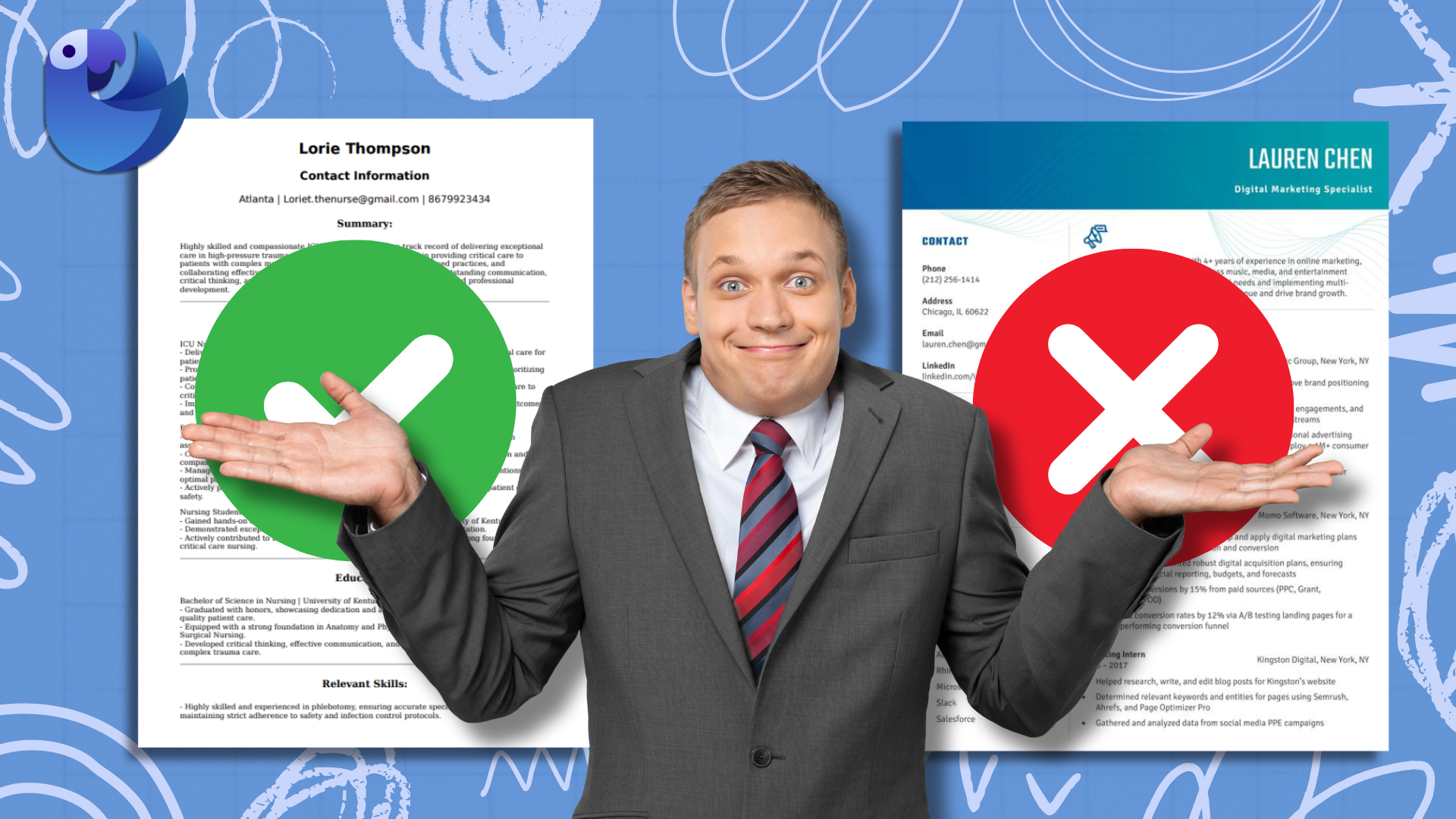Have you ever wondered why you aren't hearing anything back from those jobs you applied for? The truth of
the situation is that
You're about to find out how to make your resume not suck.
There are many factors that go into making a resume not suck, but most the most common issues in resumes relate to poor formatting and content.
Formatting
How to format a resume? Having a properly formatted resume can be the difference between success and failure when applying for jobs. First impressions matter, and recruiters often make snap judgments within seconds of glancing at your resume. Additionally, Applicant Tracking Systems (ATS) are notorious for their ruthless screening process.
To ensure your resume doesn't get overlooked, avoid the following formatting mistakes:
- Avoid including pictures.
- Avoid graphical elements such as skill bars.
- Avoid multi-column resume formats.
- Stay away from non-plain text resumes (fancy templates).
- Avoid excessive length.
Applicant Tracking Systems struggle with parsing information from visually complex resumes. An ATS works by extracting text and comparing it to the job description. Imagine spending top dollar for a fancy resume template--
Custom formatting with graphical skill bars, two columns to neatly display all your education and experience, and a cute little picture in the top left corner to let them know how pretty you are.
You apply for dozens of jobs and...
To combat this, stick to a single-page, plain text resume tailored to the job opportunity. Clearly and concisely detail your skills and experience that make you a suitable choice for the position.
Content
Why do I need a targeted resume? Too many people make the mistake of using a generic resume for all job applications. However, a one-size-fits-all approach can significantly lower your chances of getting the job. This is especially true when an ATS is involved and comparing the content in your resume with what's in the job description. Without tailoring your resume to the specific position, you risk blending into with the crowd. Employers want candidates whose qualifications and skills align with the job requirements. Recruiters and hiring managers are not spending much time on your resume. If they don't see the right skills within 10 seconds they are moving on.
Before writing your resume do some research on the job you're going to be applying for. Get a good understanding of the key responsibilities, skills and qualifications required for the position. Use this as a road map to guide the development of your resume. If the employer calls out any specific skills or qualifications, you must include them in your resume. If you find that your experience doesn't lend itself to the kinds of jobs you're applying for, then you may want to emphasize transferable skills. Create sections that showcase skills acquired in previous roles or through education, demonstrating how these can be applied to excel in the new position. If you're struggling to build the connection and don't have the direct skills, I recommend applying for a different position that will favor your skillset.
You're probably thinking about how much work it's going to take to tailor your resume to each position and you're right, it's a ton of work. Sadly, this is why many people don't take this step. Many of the resume builders out there aren't really built around this concept either. Most of them include an enhanced word processor that gives you suggestions on what to type. It's as tedious as doing it yourself repeatedly in Microsoft Word.
Luckily you've found ProRes.ai. ProRes is designed around the premise that you only need to do the work once. Users can build their profile using our built-in generative AI tools and resume importer and then submit the job they want to apply for. Our system will generate a resume that is tailored to your skills and aligns with what the employer is searching for. All that's left to do is make any needed tweaks in our built-in editor and apply for your dream job. Ta-da your resume no longer sucks!


